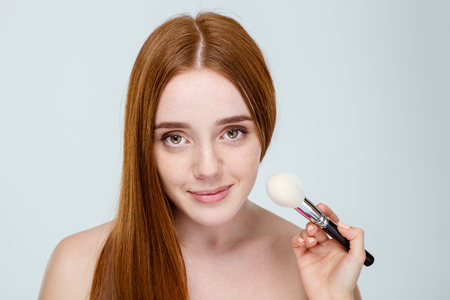1. Understanding Sensitive Skin
If you’ve ever felt a stinging, burning, or itchy sensation after using a new lotion or face wash, you might have sensitive skin. In the United States, having sensitive skin is more common than you might think. It means your skin reacts quickly to certain ingredients, environmental factors, or even stress.
What Does It Mean to Have Sensitive Skin?
Sensitive skin isn’t just about redness; it can show up as dryness, flakiness, breakouts, or that uncomfortable tight feeling. Many Americans notice their skin feels worse after exposure to cold winds, hot showers, or even air conditioning. Genetics can play a role, but lifestyle factors are just as important.
Common Triggers in the American Lifestyle
| Trigger | Examples |
|---|---|
| Weather Extremes | Hot summers, cold winters, dry indoor heating |
| Chemical Exposure | Fragrances in laundry detergents, harsh soaps |
| Diet & Habits | High caffeine intake, spicy foods, alcohol |
| Stress & Lack of Sleep | Busy work schedules, high screen time |
Why Careful Moisturizer Selection Matters
The moisturizer you choose can make all the difference for sensitive skin. The wrong product may cause flare-ups, while the right one can help strengthen your skin’s barrier and keep it calm. Since many moisturizers in the U.S. market contain fragrances or other potential irritants, it’s especially important to read ingredient labels carefully and look for products specifically formulated for sensitive skin types.
2. Key Ingredients to Look For in Moisturizers
When you have sensitive skin, choosing the right moisturizer can make a huge difference in your daily comfort and long-term skin health. The key is to look for ingredients that are gentle, soothing, and recommended by dermatologists. Here’s a simple breakdown of what you should look for when scanning the label on a moisturizer:
Top Ingredients That Support Sensitive Skin
| Ingredient | Why It’s Great for Sensitive Skin | Common Product Names |
|---|---|---|
| Colloidal Oatmeal | Soothes irritation, calms redness, and provides a protective barrier. FDA-recognized for relieving dryness and itchiness. | Aveeno Daily Moisturizing Lotion, Eucerin Skin Calming Cream |
| Ceramides | Help restore and maintain the skin’s natural barrier, locking in moisture and keeping out irritants. | CeraVe Moisturizing Cream, Cetaphil Restoraderm |
| Hyaluronic Acid | Attracts water into the skin, offering deep hydration without feeling heavy or greasy. | Neutrogena Hydro Boost Water Gel, La Roche-Posay Hyalu B5 |
| Aloe Vera | Cools and soothes inflamed or irritated skin while providing light hydration. | Vanicream Moisturizing Cream, Alaffia Everyday Shea Lotion |
| Squalane | Mimics natural oils in your skin to deliver lightweight moisture without clogging pores or causing breakouts. | Biossance Squalane + Omega Repair Cream, The Ordinary 100% Plant-Derived Squalane |
What Makes These Ingredients Special?
- Gentle & Non-Irritating: All these ingredients are typically well-tolerated by even very reactive skin types.
- Dermatologist-Recommended: They’re frequently found in products that dermatologists suggest for patients with eczema, rosacea, or easily irritated skin.
- No Added Fragrances or Dyes: Most moisturizers made for sensitive skin avoid fragrances and dyes that could trigger flare-ups—always check the ingredient list!
Pro Tips for Shopping in the U.S.
- Look for products labeled “fragrance-free,” “hypoallergenic,” or “for sensitive skin.” In American drugstores like CVS or Walgreens, you’ll often find dedicated sections for gentle skincare.
- If you’re unsure about a product, do a patch test on your inner arm before using it on your face.
- Avoid trendy ingredients like essential oils or strong acids unless specifically recommended by your dermatologist.
Choosing moisturizers with these core ingredients helps keep sensitive skin hydrated, calm, and protected all year round.

3. Ingredients and Additives to Avoid
If you have sensitive skin, it’s important to be picky about what goes on your face. Some ingredients that are super common in U.S. moisturizers can actually trigger redness, stinging, or breakouts for sensitive types. Here’s a quick guide to help you spot and avoid the usual culprits:
Common Irritants in Moisturizers
| Ingredient | Why Its Problematic | Where You Might Find It |
|---|---|---|
| Fragrances (Parfum) | Can cause allergic reactions, itching, and irritation | Most scented lotions and creams, even some labeled “unscented” |
| Alcohols (like SD Alcohol, Denatured Alcohol, Isopropyl Alcohol) | May dry out skin, disrupt the protective barrier, and lead to sensitivity or burning sensations | Lightweight gels, toners, some lotions |
| Certain Preservatives (Parabens, Formaldehyde releasers like DMDM Hydantoin, Methylisothiazolinone) | Linked to contact dermatitis and allergic reactions in sensitive skin | Most shelf-stable skincare products |
| Essential Oils (Lavender Oil, Peppermint Oil, Citrus Oils) | Natural but highly sensitizing; can cause redness or rashes | “Natural” or “organic” labeled products |
| Sulfates (Sodium Lauryl Sulfate, SLS) | Harsh cleansing agents that strip moisture and irritate delicate skin | Cleansers, foaming moisturizers |
| Dyes and Color Additives | Add no benefit for your skin; may provoke allergic responses or irritation | Tinted creams and lotions |
| Lanolin | A natural moisturizer that can still trigger allergies in some people with sensitive skin | Creams marketed as ultra-moisturizing or for eczema |
Quick Tips for Sensitive Skin Shopping:
- Read the label: Always check the full ingredient list before buying.
- Avoid strong scents: If you see “fragrance” or “parfum,” skip it.
- Look for “alcohol-free”: Not all alcohols are bad (fatty alcohols like cetyl are fine), but drying ones should be avoided.
- Patches save faces: Do a patch test on your wrist or behind your ear before using a new product on your face.
Your Skin Knows Best!
If something stings or burns right away—even if it’s a popular brand—listen to your skin and stop using it. Everyone’s sensitivity triggers are a little different, so always keep track of what works and what doesn’t as you try new products.
4. Choosing the Right Texture and Formulation
When it comes to picking a moisturizer for sensitive skin, texture and formulation matter just as much as the ingredient list. The way a moisturizer feels—whether its a cream, lotion, or gel—can really affect how your skin responds, especially if you deal with redness, irritation, or flare-ups. Plus, your local climate and daily routine in the U.S. can help guide you toward the best choice.
Creams, Lotions, and Gels: Whats the Difference?
| Texture | Best For | Why It Works | Typical American Use Case |
|---|---|---|---|
| Creams | Very dry or sensitive skin | Rich, thick formulas lock in moisture and protect against harsh weather | Great for winter months in northern states (like Minnesota or New York) or for nighttime routines |
| Lotions | Normal to slightly dry/sensitive skin | Lighter than creams but still hydrating; easy to spread over larger areas | Perfect for everyday use in moderate climates (like California or North Carolina) |
| Gels | Oily-sensitive or acne-prone skin | Water-based and fast-absorbing; non-greasy finish soothes without clogging pores | Ideal for hot, humid southern states (like Florida or Texas), or for those who hate heavy feeling products |
Matching Texture to Your Lifestyle and Climate
If you live somewhere cold and dry: Go for a heavier cream. These are packed with occlusives (like petrolatum or shea butter) that create a barrier against wind and indoor heating. If your skin is extra sensitive in winter, look for fragrance-free options marked “for sensitive skin.”
If you’re somewhere hot and humid: Lightweight gels are your best friend. They hydrate without feeling sticky or clogging pores—a big plus if you sweat a lot or spend time outdoors.
If youre always on the go: Consider lotions that absorb quickly and won’t leave residue on your clothes. Pump bottles make reapplication easy at work, school, or after the gym.
Sensitive combination skin? You might need two types: a gel for daytime and a richer cream at night when your skin repairs itself.
Quick Tips for Sensitive Skin Moisturizer Shopping:
- Avoid alcohol-heavy formulas: These can sting and dry out sensitive skin.
- No strong fragrances or dyes: The simpler the formula, the better.
- Ceramides and hyaluronic acid: Look for these gentle hydrating ingredients—they strengthen your skin’s natural barrier.
- Always patch test first!
Your Best Bet?
The right texture makes all the difference in how comfortable your sensitive skin feels day-to-day. Let your local weather, daily habits, and personal comfort guide you—and don’t be afraid to adjust as seasons change!
5. Tips for Patch Testing and Incorporating into Your Routine
Why Patch Testing Matters for Sensitive Skin
If you have sensitive skin, it’s important to make sure a new moisturizer won’t cause irritation, redness, or breakouts before applying it all over your face. Patch testing helps you spot potential reactions early, keeping your skin happy and healthy.
How to Patch Test a New Moisturizer at Home
| Step | What to Do | Tips |
|---|---|---|
| 1. Choose the Area | Apply a small amount of the moisturizer to a discreet spot, like behind your ear or on your inner forearm. | This area is less visible if you react. |
| 2. Wait and Observe | Leave the product on for 24 hours without washing it off. | Avoid other products in that area during this time. |
| 3. Check for Reactions | Look for redness, itching, burning, swelling, or bumps. | If any irritation occurs, do not use the product on your face. |
| 4. Repeat If Needed | If your skin is extremely sensitive, repeat the patch test for up to 3 days. | This helps catch delayed reactions. |
Adding a New Moisturizer to Your Skincare Routine Safely
Start Slow and Simple
Introduce only one new product at a time. This makes it easier to identify what causes any reaction if your skin gets upset.
Suggested Steps for Introducing a New Moisturizer:
- Night First: Try using the moisturizer at night so you can monitor how your skin reacts while you sleep.
- Sparse Application: Use a thin layer on clean, dry skin. Avoid areas that are already irritated or broken out.
- Frequency: Start by applying every other day. If no irritation appears after several uses, gradually increase to daily use.
- Monitor Your Skin: Watch for any signs of redness, stinging, tightness, or breakouts. If these occur, stop using the product and consult with a dermatologist if needed.
- No Mixing: Avoid introducing other new skincare products (like serums or treatments) at the same time. Stick with your tried-and-true basics until you’re sure your skin tolerates the new moisturizer well.
Listen to Your Skin
If your skin feels comfortable—meaning no burning, itching, or unusual dryness—you can safely continue using the new moisturizer as part of your daily routine. Remember: Sensitive skin can change with seasons or stress, so always be gentle and patient with your skincare choices!
6. Recommended Moisturizer Options for Sensitive Skin
Finding the right moisturizer for sensitive skin can be a game changer for your daily routine. Below is a curated list of some of the most popular and dermatologist-recommended moisturizers available in the U.S. These products are widely praised for their gentle formulas, minimal fragrance, and soothing ingredients that help to hydrate without irritation.
Top Moisturizer Brands and Products for Sensitive Skin
| Brand & Product | Main Ingredients | Why It’s Good for Sensitive Skin | Where to Buy |
|---|---|---|---|
| Cetaphil Moisturizing Cream | Glycerin, Sweet Almond Oil, Vitamin E | Fragrance-free, rich but non-greasy, supports skin barrier | Target, Walmart, Amazon |
| CeraVe Moisturizing Cream | Ceramides, Hyaluronic Acid, Glycerin | Restores protective skin barrier, non-comedogenic, accepted by National Eczema Association | CVS, Walgreens, Amazon |
| La Roche-Posay Toleriane Double Repair Face Moisturizer | Ceramides, Niacinamide, Prebiotic Thermal Water | Soothes redness, lightweight texture, oil-free and fragrance-free | Ulta Beauty, Target, Amazon |
| Vanicream Moisturizing Cream | Petrolatum, Glycerin, Sorbitol | No dyes or fragrance, ideal for allergy-prone and ultra-sensitive skin | Walmart, CVS, Amazon |
| Aveeno Calm + Restore Oat Gel Moisturizer | Oat Extract, Feverfew, Glycerin | Cools and calms irritation, free of parabens and alcohols commonly irritating to sensitive skin | Target, Walgreens, Amazon |
| Eucerin Advanced Repair Cream | Ceramides, Urea, Glycerin | Deeply hydrating for very dry sensitive skin; fragrance-free formula minimizes risk of reaction | CVS, Rite Aid, Amazon |
| Burt’s Bees Sensitive Daily Moisturizing Cream | Cotton Extract, Aloe Vera, Rice Extract | Naturally derived ingredients; hypoallergenic and dermatologist-tested for sensitive skin safety | Kroger, Target, Amazon |
| Neutrogena Hydro Boost Gel-Cream (Extra Dry) | Hyaluronic Acid, Glycerin (Fragrance-Free version) |
Gel texture absorbs quickly; oil-free and dye-free option for those with reactive skin types | Walgreens, CVS, Amazon |
How to Choose the Right Moisturizer?
If you have sensitive skin, always look for:
- No added fragrances or dyes: These are common irritants.
- Ceramides & hyaluronic acid: Help repair and maintain your skin’s natural barrier.
- Simplicity: Fewer ingredients often mean fewer potential triggers.
Your Personalized Tip:
If you notice stinging or redness after using a new product—even one labeled “for sensitive skin”—stop immediately and patch test another option from the table above. Everyone’s sensitivity triggers are different!
Please Note:
The products listed above are generally safe for most people with sensitive skin. However, it’s always best to consult with a dermatologist if you’re unsure about which moisturizer will work best for your unique needs.

